Understanding the Integration of UAVs in National Defense
The landscape of modern warfare is evolving at an unprecedented pace, and at the forefront of this transformation are Unmanned Aerial Vehicles (UAVs). These remarkable machines, often referred to as drones, have become a cornerstone of national defense strategies across the globe. But what exactly are UAVs, and why are they so critical in today's military operations? In this article, we will delve into the multifaceted role of UAVs in national defense, exploring their applications, benefits, challenges, and the exciting future that lies ahead.
UAVs are not just flying machines; they are sophisticated platforms equipped with advanced technologies that enable them to perform a variety of tasks. From surveillance and reconnaissance to combat support, these aerial vehicles are revolutionizing how military operations are conducted. Imagine a battlefield where commanders can access real-time intelligence without putting troops in harm's way. This is the reality that UAVs are creating, and it's a game-changer.
As we embark on this exploration, it's essential to understand the evolution of UAV technology. Initially developed for reconnaissance during the early 20th century, UAVs have undergone significant advancements. Today, they are equipped with cutting-edge sensors and communication technologies that enhance their effectiveness in diverse operational environments. This progression has not only expanded their capabilities but has also increased their relevance in modern military strategies.
In the following sections, we will examine the various applications of UAVs in military operations, highlighting their versatility and the critical role they play in enhancing operational efficiency and safety. We'll also discuss the benefits of using UAVs, the challenges faced in their integration, and what the future may hold for these incredible machines. So, buckle up as we take a deep dive into the world of UAVs and their integration into national defense.
The journey of UAV technology is a fascinating tale of innovation and adaptation. From the early days of rudimentary flying machines to today's highly sophisticated drones, the evolution of UAVs has been marked by significant milestones. The initial use of UAVs can be traced back to World War I, where they were primarily employed for reconnaissance missions. However, it wasn't until the late 20th century that technological advancements began to unlock their full potential.
Modern UAVs are equipped with a suite of advanced technologies, including GPS navigation, high-resolution cameras, and real-time data transmission systems. These features enable them to gather intelligence, conduct surveillance, and even engage in combat operations with remarkable precision. The integration of artificial intelligence (AI) is also paving the way for more autonomous operations, allowing UAVs to make decisions in real-time without human intervention.
UAVs have found a myriad of applications in military operations, fundamentally changing how missions are planned and executed. Their versatility is one of their most significant advantages, allowing them to perform various roles effectively. Some of the key applications include:
- Surveillance and Reconnaissance: UAVs provide critical intelligence by conducting surveillance missions that offer real-time situational awareness.
- Target Acquisition: They assist in identifying and tracking targets, enhancing the accuracy of military operations.
- Combat Support: UAVs can deliver precision strikes, minimizing collateral damage and increasing mission success rates.
One of the primary roles of UAVs is in surveillance and reconnaissance. These missions are crucial for gathering intelligence on enemy movements, assessing battlefield conditions, and providing commanders with the information they need to make informed decisions. UAVs equipped with advanced sensors can capture high-resolution images and videos, even in challenging environments. This capability allows military leaders to maintain situational awareness without risking the lives of personnel.
The effectiveness of UAVs in intelligence gathering is largely due to their advanced sensor technology. These sensors can include thermal imaging, electro-optical cameras, and synthetic aperture radar, each designed to provide unique insights into the operational environment. By employing these technologies, UAVs can collect data that is vital for mission planning and execution, ensuring that military forces are always one step ahead.
Another critical aspect of UAV operations is their ability to transmit data in real-time. This capability allows military commanders to receive immediate updates on the battlefield, facilitating timely decision-making. Imagine being able to see live footage of enemy positions while strategizing your next move. This level of situational awareness is invaluable in high-stakes military operations and significantly enhances operational effectiveness.
UAVs also play a pivotal role in combat support, particularly in precision strikes. Equipped with advanced targeting systems, they can engage enemy targets with remarkable accuracy, thereby reducing the risk of collateral damage. This precision is crucial in urban warfare scenarios where the potential for civilian casualties is high. By utilizing UAVs for these missions, military forces can achieve their objectives while adhering to ethical standards and minimizing unintended consequences.
Integrating UAVs into national defense strategies offers numerous benefits that enhance military operations. Some of the most significant advantages include:
- Cost-Effectiveness: UAV operations are generally more affordable than traditional manned aircraft, allowing military forces to allocate resources more efficiently.
- Enhanced Safety: By performing dangerous missions remotely, UAVs help protect military personnel from harm, particularly in high-threat environments.
- Increased Operational Efficiency: UAVs can be deployed quickly and can operate in conditions that may be challenging for manned aircraft, thus improving overall mission effectiveness.
When it comes to military budgets, every dollar counts. UAVs have emerged as a cost-effective solution for many defense operations. The operational costs associated with UAVs are significantly lower compared to traditional manned aircraft. This reduction in costs allows military forces to invest in other critical areas, such as training and technology development, ultimately enhancing overall operational capabilities.
In the world of defense, the safety of personnel is paramount. UAVs play a crucial role in mitigating risks associated with dangerous missions. By allowing operators to control these vehicles remotely, military forces can conduct operations without placing human lives in jeopardy. This shift not only protects personnel but also boosts morale, knowing that advanced technology is safeguarding their lives during high-risk operations.
While the benefits of UAVs in national defense are compelling, there are also significant challenges that must be addressed. These challenges include regulatory issues, technological limitations, and ethical concerns surrounding their use. Navigating these hurdles is crucial for the successful integration of UAVs into military strategies.
The rapid advancement of UAV technology has outpaced existing regulatory frameworks. As military forces increasingly rely on UAVs, there is a pressing need for updated policies that govern their operations. This includes addressing issues related to airspace management, privacy concerns, and the legal implications of using UAVs in combat scenarios. Establishing a clear regulatory landscape is essential to ensure responsible and effective UAV integration.
Despite their many advantages, UAVs are not without their challenges. Technological limitations, such as vulnerability to hacking and reliability issues, pose significant risks. Additionally, the need for advanced navigation systems is critical, especially in environments where GPS signals may be unreliable. Addressing these technological challenges is vital for ensuring the continued effectiveness of UAVs in national defense.
As we look to the future, the potential developments in UAV technology are both exciting and promising. Emerging trends, such as increased automation and enhanced sensor capabilities, are expected to further revolutionize military operations. The integration of artificial intelligence will likely enable UAVs to make real-time decisions, enhancing their effectiveness on the battlefield.
In conclusion, the integration of UAVs into national defense strategies is not just a trend; it is a fundamental shift in how military operations are conducted. As technology continues to evolve, UAVs will play an increasingly critical role in ensuring national security and operational success. The future holds immense potential for these remarkable machines, and it will be fascinating to see how they shape the landscape of modern warfare.
- What are UAVs used for in military operations?
UAVs are primarily used for surveillance, reconnaissance, target acquisition, and combat support. - How do UAVs enhance safety for military personnel?
UAVs perform dangerous missions remotely, reducing the risk to human lives in high-threat environments. - What are the main challenges in integrating UAVs into national defense?
The main challenges include regulatory issues, technological limitations, and ethical concerns regarding their use. - What is the future of UAV technology in defense?
The future of UAV technology includes advancements in automation, AI integration, and enhanced sensor capabilities, which will further revolutionize military operations.
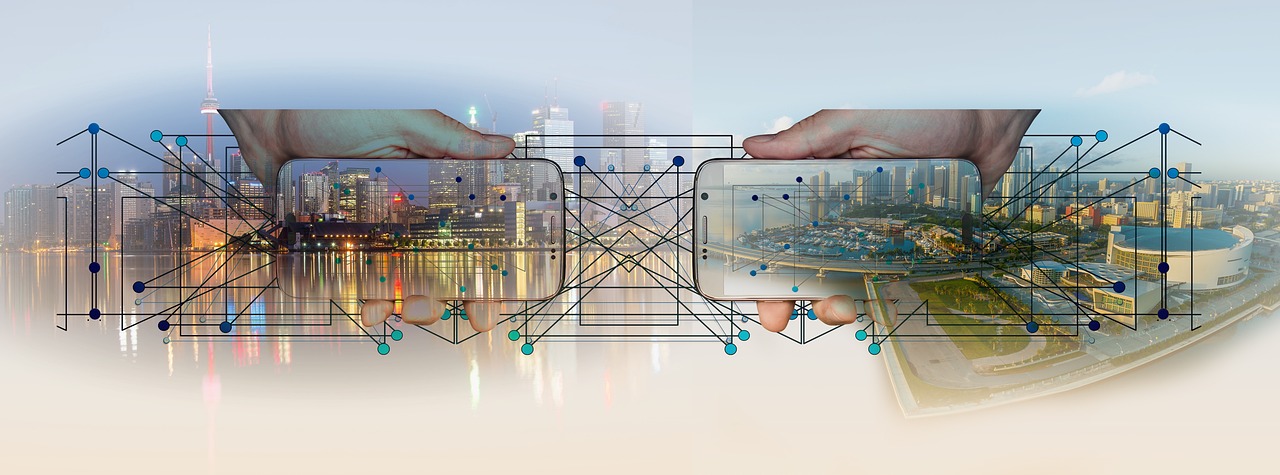
The Evolution of UAV Technology
The journey of Unmanned Aerial Vehicles (UAVs) has been nothing short of remarkable. From their humble beginnings as rudimentary radio-controlled aircraft to the sophisticated systems we see today, UAV technology has evolved significantly over the decades. Initially developed for military training exercises during World War I, these aircraft were simple and lacked the advanced capabilities we now associate with modern UAVs. The early models were primarily used for target practice, but they laid the groundwork for future advancements.
As we moved into the latter half of the 20th century, the Vietnam War marked a pivotal moment in UAV development. The U.S. military began to explore the potential of drones for reconnaissance missions, leading to the creation of the Ryan Firebee, one of the first UAVs used for surveillance. This era highlighted the strategic advantages of using UAVs to gather intelligence without putting pilots at risk. The technology continued to advance, with the introduction of more sophisticated systems in the 1980s and 1990s, including the RQ-1 Predator, which revolutionized the way military operations were conducted.
Fast forward to today, and we find ourselves in an age where UAVs are equipped with cutting-edge technology that enhances their capabilities exponentially. Modern UAVs boast advanced sensors, high-definition cameras, and real-time data transmission systems. These enhancements allow them to perform a variety of functions, from surveillance and reconnaissance to combat support. The integration of artificial intelligence and machine learning has further propelled UAV technology into a new realm, enabling autonomous operations and decision-making processes that were once the stuff of science fiction.
To illustrate the evolution of UAV technology, let’s take a look at a comparison of some key models over the years:
| Model | Year Introduced | Key Features |
|---|---|---|
| Ryan Firebee | 1951 | First UAV for reconnaissance; jet-powered |
| RQ-1 Predator | 1994 | Equipped with cameras; capable of real-time surveillance |
| MQ-9 Reaper | 2007 | Armed with missiles; advanced sensors for combat support |
| Raven UAV | 2003 | Portable; used for tactical reconnaissance |
The future of UAV technology looks even more promising, with ongoing research focused on enhancing autonomy, improving battery life, and integrating more sophisticated navigation systems. As we continue to push the boundaries of what UAVs can achieve, it is essential to consider the implications of these advancements. The evolution of UAV technology not only reflects the ingenuity of human engineering but also raises questions about the ethical use of such powerful tools in warfare and surveillance.
In conclusion, the evolution of UAV technology is a testament to the relentless pursuit of innovation in defense. As we stand on the brink of further advancements, it’s crucial to remain vigilant about the ethical and regulatory frameworks governing their use. The journey of UAVs is far from over, and as they continue to evolve, they will undoubtedly play an even more significant role in shaping the future of national defense.

Applications of UAVs in Military Operations
Unmanned Aerial Vehicles (UAVs) have revolutionized the landscape of military operations, offering a myriad of applications that enhance tactical and strategic capabilities. These versatile machines are no longer just a futuristic concept; they are integral to modern warfare. From surveillance to combat support, UAVs are changing the way military forces operate on the battlefield. Imagine having an eye in the sky that can provide real-time intelligence without putting personnel at risk. That's the power of UAVs!
One of the primary applications of UAVs is in surveillance and reconnaissance. These drones are equipped with advanced sensors and cameras that allow military commanders to gather crucial intelligence without exposing troops to danger. For instance, during a reconnaissance mission, a UAV can fly over hostile territory, capturing high-resolution images and videos that provide insight into enemy movements and positions. This information is vital for planning operations and making informed decisions. The ability to conduct surveillance without the risk of human life is a game-changer in military strategy.
UAVs excel in surveillance and reconnaissance missions, providing military forces with a significant advantage in intelligence gathering. These missions are crucial for understanding the battlefield dynamics and enemy capabilities. UAVs can operate at various altitudes and speeds, allowing them to adapt to different operational environments. They can fly for extended periods, offering persistent surveillance that traditional manned aircraft simply cannot match. This capability ensures that military leaders have the most up-to-date information at their fingertips.
To maximize their effectiveness, UAVs utilize a range of intelligence gathering techniques. These include high-definition cameras, infrared sensors, and even signals intelligence (SIGINT) capabilities. The integration of these technologies allows UAVs to collect a wealth of data in real-time. For example, a UAV equipped with an infrared sensor can detect heat signatures, which is particularly useful for identifying enemy personnel or equipment during nighttime operations.
Another critical aspect of UAV operations is their real-time data transmission capabilities. This feature enables military commanders to receive live feeds from UAVs, facilitating timely decision-making. Imagine a commander on the ground receiving live video footage from a UAV flying overhead, allowing them to assess a situation and adjust their strategy accordingly. This immediacy of information can be the difference between success and failure in military operations.
UAVs are not just about gathering intelligence; they also play a vital role in combat support and targeting. Equipped with precision-guided munitions, UAVs can conduct airstrikes with remarkable accuracy. This capability minimizes collateral damage, ensuring that military operations focus on legitimate targets while safeguarding civilian lives. For instance, a UAV can be deployed to strike a high-value target while remaining at a safe distance, reducing the risk to ground troops and civilians alike.
In summary, the applications of UAVs in military operations are vast and varied. Their ability to conduct surveillance, gather intelligence, and provide combat support makes them indispensable in modern warfare. As technology continues to advance, we can only expect these applications to expand, further enhancing the effectiveness of military operations worldwide.
- What are UAVs used for in military operations?
UAVs are primarily used for surveillance, reconnaissance, combat support, and target acquisition, providing real-time intelligence and enhancing operational effectiveness. - How do UAVs gather intelligence?
UAVs gather intelligence using advanced sensors, cameras, and data transmission technologies that allow for real-time monitoring and assessment of battlefield conditions. - What are the benefits of using UAVs in combat?
UAVs offer precision strikes, reduced risk to personnel, and the ability to operate in hostile environments without endangering human lives. - Are there any risks associated with UAV operations?
Yes, challenges include regulatory issues, technological limitations, and ethical concerns regarding their use in warfare.
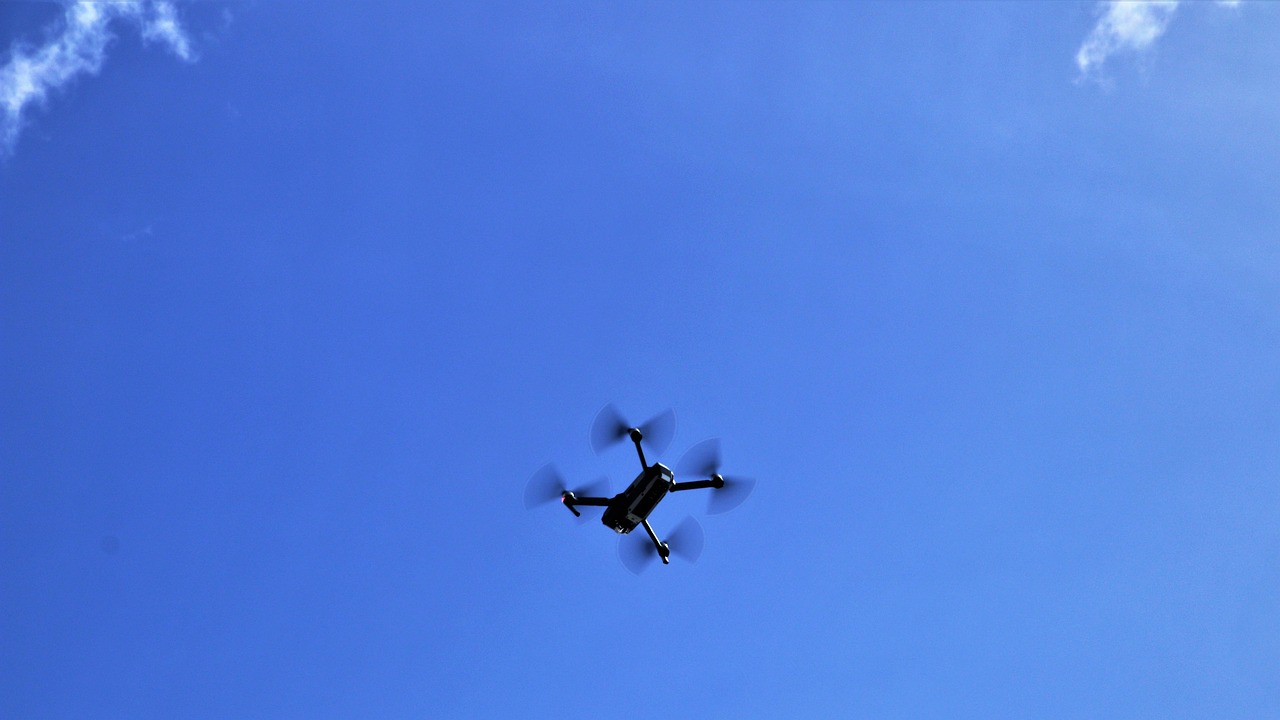
Surveillance and Reconnaissance Missions
When it comes to modern warfare, surveillance and reconnaissance are the lifeblood of strategic planning and operational effectiveness. Unmanned Aerial Vehicles (UAVs) have revolutionized these missions by providing real-time intelligence that was once the exclusive domain of manned aircraft. Imagine a bird soaring high above the battlefield, its eyes equipped with advanced technology, gathering crucial information without putting a single soldier in harm's way. This is the essence of UAVs in surveillance and reconnaissance.
UAVs are equipped with an array of sophisticated sensors and cameras that can capture high-resolution images and video, even in challenging weather conditions. The data collected is not just a snapshot; it’s a continuous stream of information that allows military commanders to maintain an up-to-date picture of the operational environment. This capability is vital for making informed decisions in the heat of battle. For example, a UAV can monitor enemy troop movements, track supply routes, and even identify potential threats, all while remaining undetected.
One of the standout features of UAVs is their ability to perform intelligence gathering using various techniques:
- Electro-Optical Sensors: These cameras provide clear images during the day and can be equipped with infrared capabilities for nighttime operations.
- Radar Systems: UAVs can utilize synthetic aperture radar (SAR) to detect and track moving targets, even through cloud cover.
- Signals Intelligence (SIGINT): By intercepting communications, UAVs can gather valuable information on enemy plans and capabilities.
Moreover, the significance of real-time data transmission cannot be overstated. UAVs are designed to relay information back to command centers instantaneously. This feature enables military leaders to respond to emerging threats without delay, enhancing operational effectiveness. In a world where every second counts, the ability to make quick decisions based on real-time data can be the difference between victory and defeat.
In addition to their tactical advantages, UAVs also contribute to strategic planning. By collecting and analyzing data over extended periods, military analysts can identify patterns and trends that inform future operations. This long-term perspective is invaluable in shaping national defense strategies and ensuring that military forces are always one step ahead of adversaries.
As we look to the future, the integration of artificial intelligence (AI) into UAVs promises to enhance their surveillance and reconnaissance capabilities even further. With AI, UAVs could autonomously identify and prioritize targets, reducing the cognitive load on human operators and increasing mission efficiency. The potential for UAVs to revolutionize military operations is immense, and as technology continues to advance, so too will their roles in national defense.
- What types of UAVs are used for surveillance? There are various types of UAVs, including fixed-wing, rotary-wing, and hybrid models, each designed for specific surveillance missions.
- How do UAVs transmit data in real-time? UAVs use secure communication links, often employing satellite or ground-based relay systems to ensure timely data transmission.
- What are the limitations of UAV surveillance? Limitations include potential vulnerabilities to hacking, reliance on weather conditions, and the need for skilled operators to analyze the data.

Intelligence Gathering Techniques
The advent of Unmanned Aerial Vehicles (UAVs) has revolutionized the way military forces gather intelligence. These sophisticated machines are equipped with an array of advanced sensors and technologies that allow them to perform tasks that were once unimaginable. Imagine having a bird's eye view of the battlefield, capable of capturing high-resolution images and data in real-time. This is precisely what UAVs bring to the table, enhancing the capabilities of military operations significantly.
One of the primary employed by UAVs is the use of electro-optical (EO) and infrared (IR) cameras. These sensors can detect and capture images in various light conditions, enabling reconnaissance missions to be conducted day or night. The EO cameras provide clear visuals, while IR cameras can identify heat signatures, making it easier to spot enemy positions or vehicles hidden from plain sight. This dual capability ensures that military commanders have access to comprehensive situational awareness.
Moreover, UAVs are often equipped with synthetic aperture radar (SAR), a technology that allows them to create detailed images of the ground, even through clouds or foliage. This is particularly useful in environments where visibility is compromised. By employing SAR, UAVs can detect movements, changes in terrain, and even the presence of hidden structures, providing invaluable intelligence to ground forces.
In addition to visual data collection, UAVs utilize signals intelligence (SIGINT) to intercept and analyze communications. This technique involves the monitoring of electronic signals, such as radio transmissions, which can provide insights into enemy plans and troop movements. By gathering this data, military analysts can piece together a clearer picture of the operational landscape, allowing for more informed decision-making.
Furthermore, the capability of real-time data transmission is a game-changer in intelligence gathering. UAVs can relay information back to command centers almost instantaneously, allowing military leaders to respond quickly to emerging threats. This immediacy is crucial in high-stakes situations where every second counts. The integration of advanced communication systems ensures that the information is not only accurate but also timely, thereby enhancing operational effectiveness.
To summarize, the intelligence gathering techniques employed by UAVs encompass a range of advanced technologies that significantly enhance military operations. These techniques include:
- Electro-optical and infrared cameras for visual reconnaissance.
- Synthetic aperture radar for detailed ground imaging.
- Signals intelligence for electronic communication monitoring.
- Real-time data transmission for timely decision-making.
As UAV technology continues to evolve, we can expect even more sophisticated intelligence gathering techniques to emerge, further solidifying their role as essential tools in modern military operations.
Q: What are UAVs?
A: UAVs, or Unmanned Aerial Vehicles, are aircraft that operate without a human pilot onboard. They are controlled remotely or autonomously and are used in various applications, including military operations.
Q: How do UAVs gather intelligence?
A: UAVs gather intelligence using advanced sensors such as electro-optical and infrared cameras, synthetic aperture radar, and signals intelligence systems, which allow them to collect and transmit data in real-time.
Q: What are the benefits of using UAVs for intelligence gathering?
A: The benefits include enhanced situational awareness, the ability to operate in various weather conditions, real-time data transmission, and reduced risk to military personnel.
Q: Are there any challenges associated with UAV intelligence gathering?
A: Yes, challenges include regulatory issues, technological limitations, and concerns regarding data security and privacy.

Real-time Data Transmission
In the fast-paced world of military operations, the ability to make quick and informed decisions can be the difference between success and failure. This is where comes into play, revolutionizing how military commanders engage with battlefield intelligence. Imagine a situation where a commander is receiving live feeds from UAVs flying over hostile territory, providing critical information on enemy movements. This capability not only enhances situational awareness but also allows for immediate tactical adjustments, ensuring that military strategies are as dynamic as the battlefield itself.
The technology behind real-time data transmission is nothing short of remarkable. UAVs are equipped with advanced communication systems that facilitate the swift transfer of data, images, and videos back to command centers. These systems often utilize a combination of satellite communication and ground-based networks to ensure that data is transmitted without delay, even in challenging environments. For instance, the use of frequency-hopping spread spectrum technology helps in minimizing the risk of interception and jamming, making the data transmission process more secure.
Moreover, the integration of 5G technology is set to further enhance these capabilities. With its higher bandwidth and lower latency, 5G can support multiple UAVs transmitting data simultaneously, allowing for a more comprehensive view of the operational landscape. This means that commanders can not only see what's happening in real-time but can also analyze the data on-the-fly, making informed decisions based on the most current information available.
To illustrate the impact of real-time data transmission, consider the following table that outlines some key advantages:
| Advantage | Description |
|---|---|
| Timeliness | Immediate access to critical data allows for rapid decision-making. |
| Enhanced Coordination | Real-time data enables better communication between units, improving overall mission effectiveness. |
| Reduced Risk | Commanders can assess threats from a safe distance, minimizing exposure to danger. |
In summary, the significance of real-time data transmission in UAV operations cannot be overstated. It empowers military forces with the ability to adapt to changing situations swiftly, ensuring that they remain one step ahead of potential threats. As technology continues to evolve, we can expect even more sophisticated data transmission methods to emerge, further enhancing the operational capabilities of UAVs in national defense.
- What is real-time data transmission? Real-time data transmission refers to the immediate transfer of data from one point to another, allowing for instant analysis and decision-making.
- How do UAVs transmit data in real-time? UAVs utilize advanced communication systems, often combining satellite and ground-based networks to ensure swift and secure data transmission.
- What technologies are improving real-time data transmission for UAVs? Emerging technologies like 5G are enhancing the capabilities of data transmission, providing higher bandwidth and lower latency.
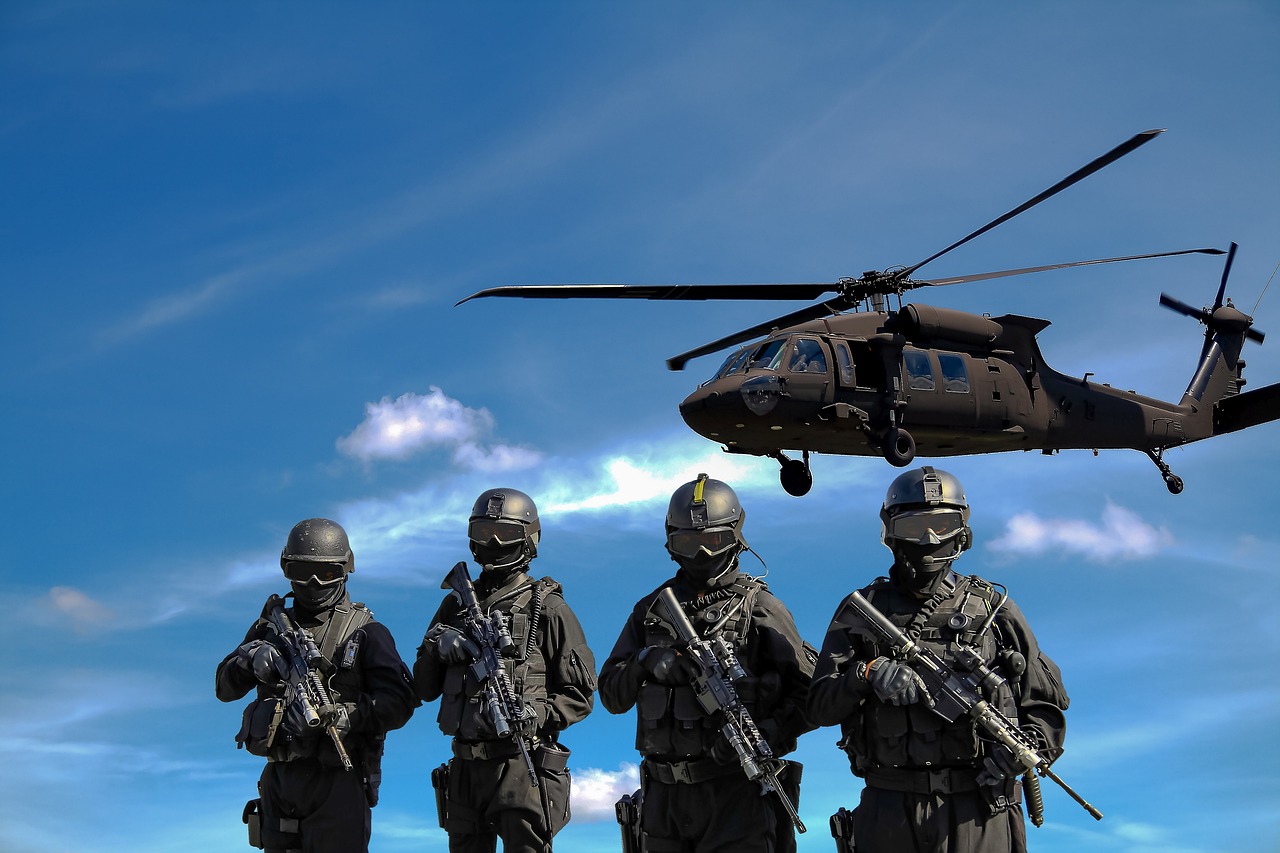
Combat Support and Targeting
Unmanned Aerial Vehicles (UAVs) have transformed the landscape of modern warfare, particularly in the realm of . These aerial assets are not just flying cameras; they are sophisticated tools that provide crucial support to military operations. Imagine having a bird's-eye view of the battlefield, with the ability to strike with precision while minimizing risk to personnel. This is the reality that UAVs bring to the table.
One of the most significant advantages of UAVs in combat operations is their ability to conduct precision strikes. Equipped with advanced targeting systems, UAVs can engage enemy targets with remarkable accuracy. This capability is particularly vital in urban warfare, where the risk of collateral damage is high. By utilizing UAVs, military forces can carry out operations that would be too dangerous or complex for traditional manned aircraft. The ability to strike with pinpoint accuracy not only enhances mission success rates but also helps maintain a positive relationship with local populations by reducing unintended casualties.
Moreover, UAVs are equipped with cutting-edge technology that allows them to gather real-time intelligence during combat missions. This intelligence is invaluable for target acquisition, as it provides commanders with the information they need to make informed decisions on the battlefield. For instance, UAVs can identify enemy positions, track movements, and assess the effectiveness of strikes, all while remaining out of harm's way. This capability to operate in high-threat environments without risking human lives is a game-changer in modern military strategy.
In addition to their targeting capabilities, UAVs also play a crucial role in combat support by providing logistical assistance. They can deliver supplies, ammunition, and medical aid to troops in remote or dangerous locations, ensuring that soldiers have the resources they need to sustain operations. This logistical support is vital in maintaining the momentum of military campaigns, especially in protracted conflicts where traditional supply lines may be compromised.
However, the integration of UAVs into combat operations is not without challenges. Issues such as communication reliability, the potential for enemy countermeasures, and the ethical implications of remote warfare must be carefully considered. As UAV technology continues to evolve, military strategists must address these challenges to fully leverage the potential of UAVs in combat support and targeting.
In conclusion, UAVs have revolutionized the way military forces conduct operations on the battlefield. Their ability to provide precision strikes, gather real-time intelligence, and support logistics makes them indispensable assets in modern warfare. As technology advances and new capabilities emerge, the role of UAVs in combat support and targeting will undoubtedly expand, shaping the future of military engagements.
- What are UAVs used for in military operations? UAVs are primarily used for surveillance, reconnaissance, target acquisition, and combat support, providing real-time intelligence and precision strikes.
- How do UAVs minimize collateral damage? UAVs are equipped with advanced targeting systems that allow for precision strikes, reducing the risk of unintended casualties during military operations.
- What challenges do UAVs face in combat? UAVs face challenges such as communication reliability, vulnerability to enemy countermeasures, and ethical concerns regarding remote warfare.
- How do UAVs support logistics in combat? UAVs can deliver supplies, ammunition, and medical aid to troops in remote or dangerous locations, ensuring that soldiers have the necessary resources during operations.
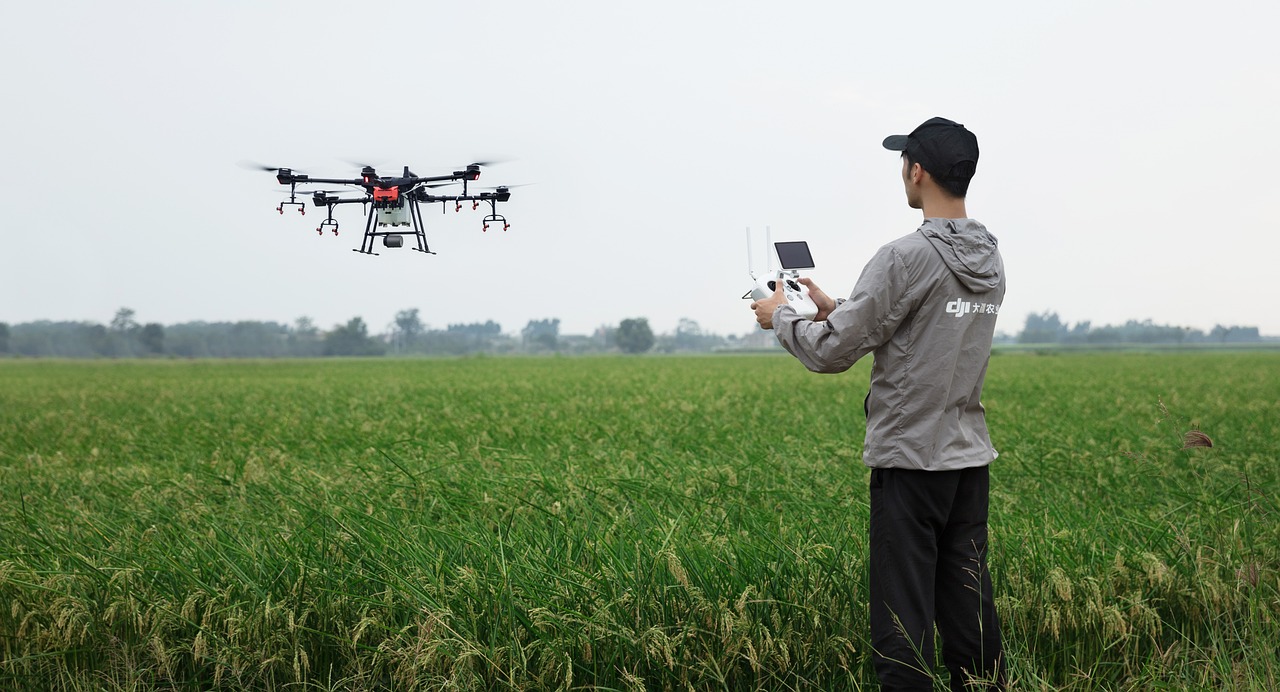
Benefits of Using UAVs in Defense
The integration of Unmanned Aerial Vehicles (UAVs) into national defense strategies has revolutionized military operations, bringing forth a multitude of benefits that enhance effectiveness and efficiency. One of the most significant advantages is cost-effectiveness. Traditional manned aircraft often come with high operational costs, including maintenance, fuel, and personnel expenses. In contrast, UAVs can perform similar missions at a fraction of the cost. For instance, a UAV can be deployed for surveillance missions without the need for a full crew, drastically reducing the financial burden on military budgets.
Moreover, UAVs contribute to enhanced safety for military personnel. By taking on high-risk tasks, such as reconnaissance in hostile territories or precision strikes, UAVs minimize the exposure of human lives to danger. Imagine sending a drone to gather intelligence over enemy lines while keeping your troops safely miles away. This capability not only protects military personnel but also allows for more strategic planning and execution of operations without the fear of casualties.
Another essential benefit is the improved operational efficiency that UAVs provide. Equipped with advanced sensors and real-time data transmission capabilities, these aerial vehicles can collect and relay crucial information back to command centers almost instantaneously. This real-time feedback loop enables military leaders to make informed decisions swiftly, adapting to changing battlefield conditions. For example, if a UAV identifies a sudden movement of enemy troops, commanders can quickly alter their strategies to counteract any threats.
To further illustrate the benefits of UAVs, consider the following table that outlines key advantages:
| Benefit | Description |
|---|---|
| Cost-Effectiveness | Lower operational costs compared to manned aircraft. |
| Safety | Reduces risk to human life by conducting dangerous missions remotely. |
| Operational Efficiency | Real-time data transmission enhances decision-making capabilities. |
| Versatility | Can be used for various missions, including surveillance, reconnaissance, and combat support. |
Furthermore, UAVs are incredibly versatile. They can be adapted for various missions, such as surveillance, reconnaissance, and even combat support. This flexibility allows military forces to utilize UAVs in diverse operational environments, making them invaluable assets. Whether it's monitoring troop movements or providing air support during ground operations, UAVs can be tailored to meet the specific needs of the mission at hand.
In conclusion, the benefits of using UAVs in defense are manifold. They not only offer a cost-effective solution to military operations but also enhance the safety of personnel and improve overall operational efficiency. As technology continues to advance, the potential applications of UAVs will only grow, making them an integral part of modern military strategy.
- What are UAVs used for in military operations?
UAVs are primarily used for surveillance, reconnaissance, target acquisition, and combat support. - How do UAVs improve safety for military personnel?
They perform dangerous missions remotely, reducing the risk of casualties. - Are UAVs cost-effective compared to traditional aircraft?
Yes, UAVs significantly lower operational costs by eliminating the need for onboard personnel and reducing maintenance expenses. - What advancements are expected in UAV technology?
Future developments may include enhanced autonomy, improved sensors, and better data transmission capabilities.

Cost-Effectiveness of UAV Operations
When it comes to modern warfare, cost-effectiveness is a crucial factor that can make or break a military's operational strategy. Unmanned Aerial Vehicles (UAVs) have emerged as a game-changer in this regard, offering a plethora of financial advantages over traditional manned aircraft. One of the primary reasons for this is the significantly lower operational costs associated with UAVs. For instance, the cost of maintaining a UAV is dramatically less than that of a fighter jet or a bomber. These savings can be attributed to several factors, including lower fuel consumption, reduced maintenance needs, and the absence of life-support systems.
Moreover, the initial investment in UAV technology can be offset by the long-term savings they provide. While some UAVs come with a hefty price tag, the overall lifecycle cost is often much lower. For example, when comparing the operational costs of a UAV like the MQ-9 Reaper to a manned aircraft like the F-16, the UAV often proves to be the more economical choice. To illustrate this point further, consider the following table:
| Aircraft Type | Average Cost per Hour | Maintenance Cost per Flight Hour | Operational Range |
|---|---|---|---|
| MQ-9 Reaper | $3,000 | $1,000 | 1,150 miles |
| F-16 Fighting Falcon | $22,000 | $6,000 | 2,280 miles |
This table highlights the stark contrast in operational costs between UAVs and traditional manned aircraft. As you can see, the MQ-9 Reaper's operational cost is less than one-seventh that of the F-16, making it a financially viable option for military forces worldwide.
In addition to direct cost savings, UAVs also enhance mission flexibility and operational efficiency. They can be deployed in various roles without the need for extensive training or preparation, allowing military forces to adapt quickly to changing scenarios. This flexibility translates into savings in terms of both time and resources, enabling faster response times in critical situations.
Furthermore, the reduced risk to human life in UAV operations can also be viewed as a cost-saving measure. By conducting high-risk missions remotely, militaries can avoid the potential costs associated with personnel casualties, which often include not only the immediate costs of medical care and recovery but also long-term impacts on families and communities.
In conclusion, the integration of UAVs into national defense strategies presents a compelling case for their cost-effectiveness. By offering lower operational costs, increased mission flexibility, and enhanced safety for military personnel, UAVs are not just a technological advancement; they are a strategic necessity in modern military operations.
- What are UAVs? UAVs, or Unmanned Aerial Vehicles, are aircraft that operate without a human pilot onboard. They can be used for various purposes, including military operations, surveillance, and research.
- How do UAVs save costs in military operations? UAVs reduce costs through lower operational expenses, less maintenance, and by mitigating risks to personnel, which can lead to savings in medical and training costs.
- Are UAVs safe to use? While UAVs significantly reduce risks to human life in combat situations, they are still subject to technological vulnerabilities and operational challenges that need to be managed.
- What is the future of UAV technology in defense? The future of UAV technology in defense looks promising, with ongoing advancements in autonomy, artificial intelligence, and sensor capabilities, which will further enhance their effectiveness and efficiency.
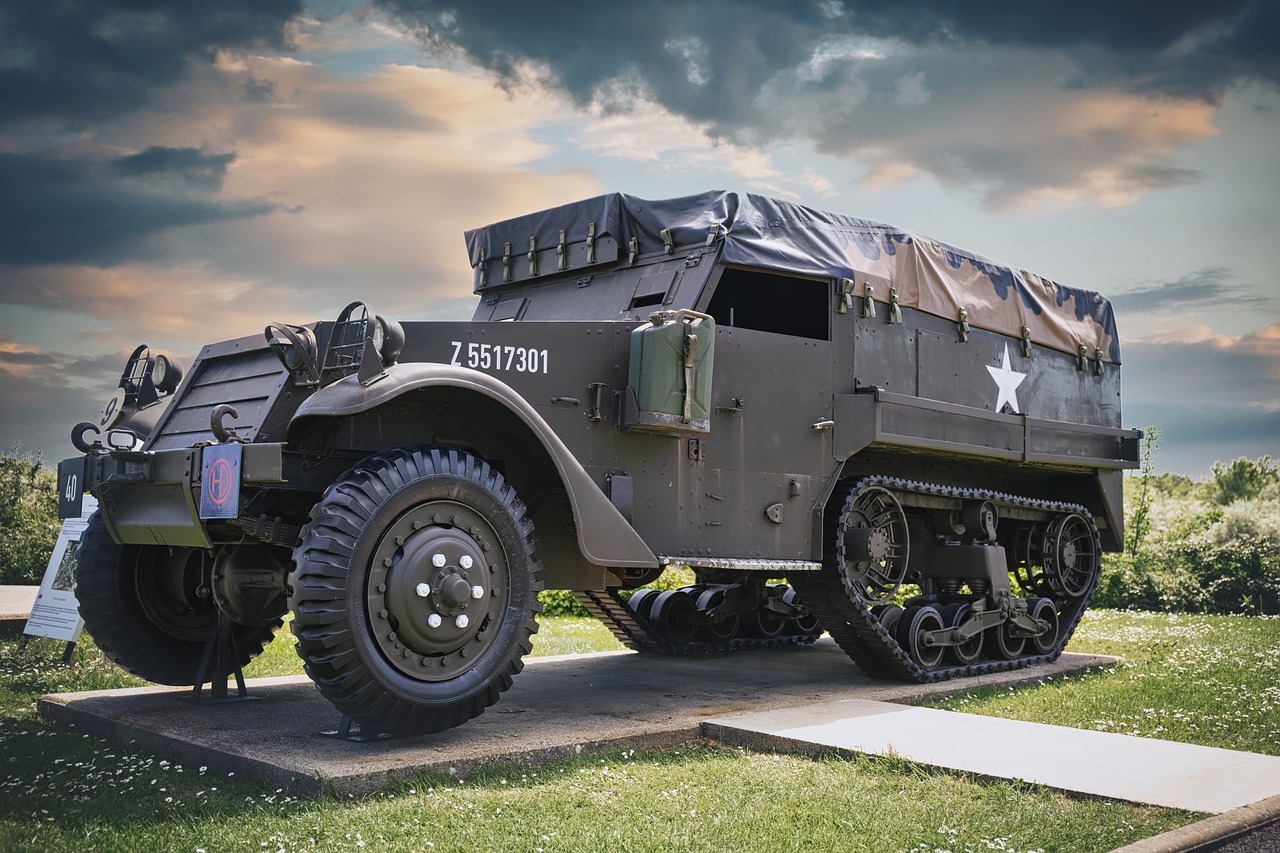
Enhanced Safety for Military Personnel
The integration of Unmanned Aerial Vehicles (UAVs) into military operations has revolutionized the way armed forces approach combat scenarios, primarily by enhancing the safety of military personnel. In traditional warfare, soldiers often had to engage directly with enemy forces, putting their lives at significant risk. However, with the advent of UAV technology, many of these high-risk tasks can now be performed remotely, allowing for a safer operational environment.
One of the most compelling aspects of UAVs is their ability to conduct surveillance and reconnaissance missions from a safe distance. Imagine a soldier perched in a combat zone, exposed to enemy fire. Now, picture that same mission being executed by a UAV, flying high above the battlefield, providing crucial intelligence without putting any human lives at risk. This shift not only protects personnel but also enhances the overall effectiveness of military operations.
Moreover, UAVs are equipped with advanced technologies that allow them to detect threats and gather intelligence without endangering soldiers. For instance, they can be deployed in areas known for heavy enemy activity, collecting data and relaying it back to command centers in real-time. This capability significantly reduces the need for ground troops to enter potentially lethal situations. The UAVs act as the eyes in the sky, ensuring that military personnel have the information they need to make informed decisions while remaining safely out of harm's way.
Additionally, UAVs can be utilized for combat support, including precision strikes, which further minimizes risks to military personnel. By using UAVs for targeted operations, the military can engage enemy targets without the need for ground troops to be present in dangerous environments. This not only protects soldiers but also allows for more strategic planning and execution of operations. The ability to strike from a distance means that military planners can engage with greater confidence, knowing that their personnel are not directly exposed to enemy fire.
In summary, the enhanced safety provided by UAVs is a game-changer for military operations. By reducing the need for personnel to be physically present in combat zones and allowing for remote engagement, UAVs not only protect lives but also improve the effectiveness of military strategies. As technology continues to advance, we can expect UAVs to play an even larger role in ensuring the safety of our armed forces, making the battlefield a less perilous place for those who serve.
- How do UAVs improve safety for military personnel?
UAVs allow for remote operations, reducing the need for soldiers to be physically present in dangerous combat zones. - What types of missions can UAVs perform to enhance safety?
UAVs can conduct surveillance, reconnaissance, and even precision strikes, all while keeping personnel safe from harm. - Are UAVs used in all branches of the military?
Yes, UAVs are utilized across various branches, including the Army, Navy, and Air Force, for a wide range of missions. - What technologies do UAVs use to gather intelligence?
UAVs are equipped with advanced sensors, cameras, and communication systems that enable them to collect and transmit data in real-time.

Challenges in UAV Integration
As the integration of Unmanned Aerial Vehicles (UAVs) into national defense strategies becomes more prevalent, several challenges must be addressed to ensure their effective deployment. These challenges range from regulatory issues and technological limitations to ethical concerns that arise from their use in military operations. Understanding these obstacles is crucial for military planners and policymakers who aim to harness the full potential of UAV technology.
One of the primary challenges in UAV integration is the regulatory and legal framework that governs their operation. Many countries are still grappling with outdated laws that do not adequately address the unique aspects of UAV technology. For instance, the airspace regulations that apply to manned aircraft often do not translate well to UAVs, which can operate at various altitudes and in diverse environments. This regulatory gap can lead to confusion and potential conflicts, especially in joint operations involving multiple nations. It is essential for governments to establish clear guidelines that accommodate the operational capabilities of UAVs while ensuring safety and compliance with international laws.
In addition to regulatory challenges, there are also technological limitations that must be overcome. UAVs, while advanced, are not immune to vulnerabilities. Issues such as susceptibility to hacking pose significant risks to military operations. A compromised UAV could lead to the loss of sensitive information or even the hijacking of the drone for adversarial purposes. Furthermore, reliability remains a concern. Technical failures during critical missions can have dire consequences, making it imperative for developers to enhance the robustness of UAV systems. The need for advanced navigation systems is also paramount, particularly in environments where GPS signals may be unreliable or jammed.
Ethical concerns are another layer of complexity in UAV integration. The use of drones in military operations raises questions about accountability and the implications of remote warfare. How do we ensure that UAVs are used responsibly, especially in situations where civilian lives could be at risk? The potential for collateral damage during strikes can lead to significant moral dilemmas, and military leaders must grapple with the implications of their decisions. Developing a comprehensive ethical framework for UAV use is essential to maintain public trust and uphold international humanitarian laws.
In summary, while UAVs offer transformative capabilities for national defense, their integration is not without challenges. Addressing regulatory gaps, enhancing technological reliability, and navigating ethical dilemmas are all critical steps that must be taken to fully realize the potential of UAVs in modern military operations. As these challenges are tackled, the future of UAVs in defense looks promising, paving the way for innovative solutions that can reshape the battlefield.
- What are the main challenges in UAV integration? The main challenges include regulatory issues, technological limitations, and ethical concerns regarding their use in military operations.
- How do regulatory frameworks affect UAV operations? Outdated regulations can create confusion and conflicts in UAV operations, making it essential for governments to establish clear guidelines.
- What are the technological vulnerabilities of UAVs? UAVs can be susceptible to hacking and technical failures, which can compromise military operations and sensitive information.
- Why are ethical concerns significant in UAV use? Ethical concerns are crucial because UAVs can cause collateral damage and raise questions about accountability in military actions.
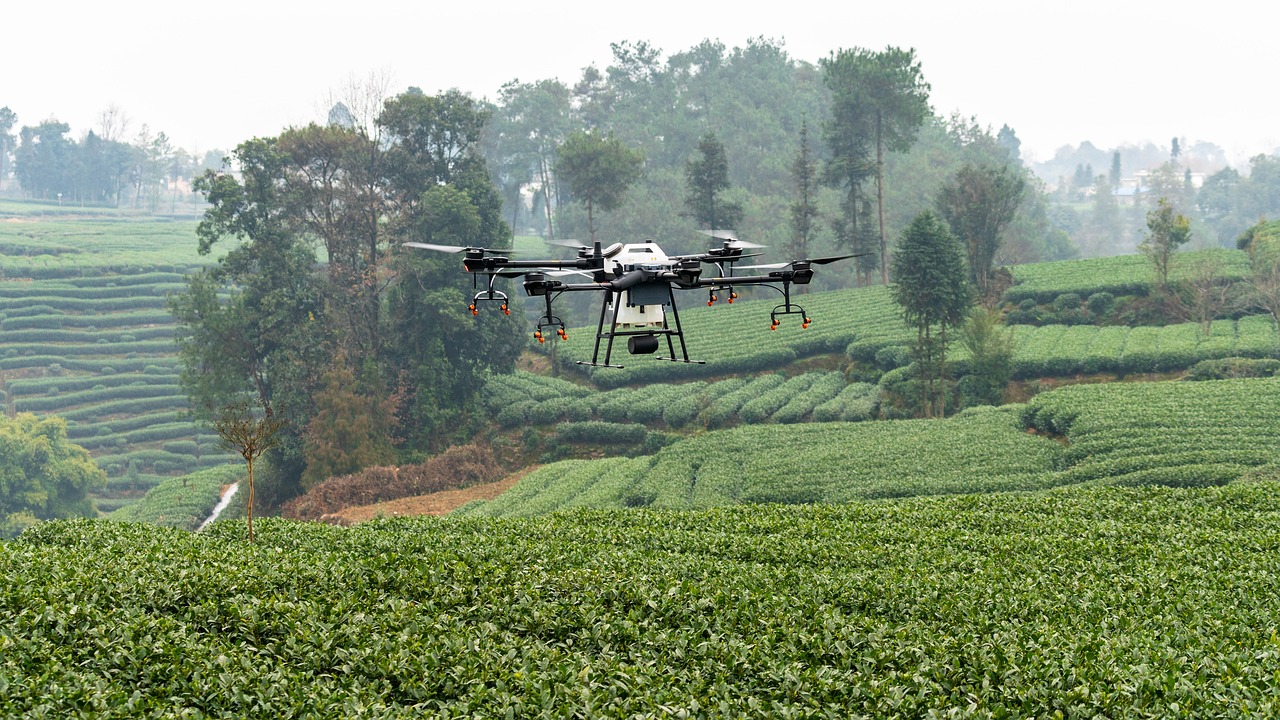
Regulatory and Legal Framework
The integration of Unmanned Aerial Vehicles (UAVs) into national defense strategies brings forth a myriad of regulatory and legal challenges that must be addressed to ensure their effective and responsible use. As UAV technology advances at a breakneck pace, existing legal frameworks often lag behind, creating a patchwork of regulations that can complicate operations. This dissonance between technology and regulation can lead to confusion among military operators and policymakers alike, ultimately impacting mission success.
One of the primary concerns in the regulatory landscape is the airspace management for UAVs. Unlike traditional aircraft, UAVs operate at various altitudes and can be deployed for a wide range of missions, from surveillance to combat support. This necessitates a comprehensive airspace management system that accommodates both manned and unmanned aircraft. Currently, many countries are working to establish Unmanned Traffic Management (UTM) systems to facilitate safe integration into national airspace. These systems are designed to prevent collisions, ensure compliance with flight rules, and provide situational awareness to both UAV operators and air traffic controllers.
Moreover, the legal implications of UAV operations extend beyond airspace regulations. Issues surrounding privacy rights, data protection, and civil liberties must also be considered. For instance, the use of UAVs for surveillance raises significant ethical questions about the extent to which military forces can monitor individuals and collect data without infringing on their rights. This has led to calls for clearer guidelines and policies that define acceptable use cases for UAVs in both military and civilian contexts.
In the United States, the Federal Aviation Administration (FAA) has established regulations for the operation of UAVs, including requirements for pilot certification and airworthiness standards. However, these regulations are primarily focused on civilian applications and do not fully encompass the unique operational needs of military UAVs. As a result, military branches often operate under different sets of rules, which can lead to inconsistencies in how UAVs are deployed and managed.
To address these challenges, it is crucial for governments and military organizations to collaborate in developing a robust regulatory framework that encompasses the following key elements:
- Clear Definitions: Establishing precise definitions for different types of UAVs and their intended uses.
- Safety Standards: Implementing safety protocols that govern UAV operations to minimize risks to both personnel and civilians.
- Liability and Accountability: Defining legal responsibilities for UAV operators in case of accidents or breaches of privacy.
- International Cooperation: Promoting international agreements to harmonize regulations across borders, facilitating joint operations and interoperability.
In conclusion, the regulatory and legal framework surrounding UAVs in national defense is still evolving. It is imperative for stakeholders to engage in ongoing dialogue to address these challenges and create a cohesive approach that ensures the safe and effective use of UAVs. As technology continues to evolve, so too must the laws and regulations that govern their operation, striking a balance between innovation and ethical responsibility.
- What are UAVs used for in national defense? UAVs are primarily used for surveillance, reconnaissance, target acquisition, and combat support in military operations.
- How do regulations differ for military and civilian UAVs? Military UAVs often operate under different regulations than civilian UAVs, which can lead to inconsistencies in their deployment and management.
- What are the privacy concerns associated with UAVs? The use of UAVs for surveillance raises ethical questions about privacy rights and data collection, necessitating clear guidelines for their use.
- How can international cooperation improve UAV regulation? Harmonizing regulations across borders can facilitate joint operations and ensure interoperability among allied forces.

Technological Limitations and Risks
The integration of Unmanned Aerial Vehicles (UAVs) into national defense is not without its hurdles. While these flying marvels have revolutionized military operations, they also come with a set of that cannot be overlooked. One of the most pressing issues is their vulnerability to hacking. As military operations become increasingly reliant on digital technologies, the risk of cyberattacks on UAV systems grows. Imagine a scenario where an enemy could take control of a UAV mid-mission, turning a critical asset into a weapon against its own forces. This potential for cyber warfare raises serious concerns about the security of military data and operational integrity.
Moreover, UAVs often face reliability issues. Technical malfunctions can occur due to various factors, including environmental conditions and software bugs. For instance, a UAV's sensors may fail, leading to inaccurate data collection during a crucial reconnaissance mission. Such failures not only jeopardize the mission but can also result in significant financial losses and compromised safety for ground personnel.
Another significant challenge is the need for advanced navigation systems. Unlike manned aircraft, UAVs operate autonomously, relying heavily on GPS and other navigation technologies. However, GPS signals can be disrupted or jammed, which can lead to navigation errors. In a combat scenario, losing a UAV’s navigational capabilities could mean the difference between mission success and failure. This reliance on technology underscores the importance of developing robust systems that can withstand various forms of interference.
Furthermore, there are ethical concerns surrounding the use of UAVs, particularly in combat situations. The ability to conduct strikes from a distance raises questions about accountability and the moral implications of remote warfare. As military forces deploy UAVs for targeted operations, the potential for civilian casualties increases, leading to public outcry and demands for stricter regulations. Balancing the tactical advantages of UAVs with ethical considerations is a challenge that defense agencies must navigate carefully.
In summary, while UAVs offer unparalleled advantages in modern warfare, their integration into national defense strategies is fraught with technological limitations and risks. Addressing these challenges requires ongoing investment in research and development, as well as a commitment to establishing comprehensive regulatory frameworks that ensure the safe and responsible use of UAV technology.
- What are the primary technological limitations of UAVs? UAVs face vulnerabilities to hacking, reliability issues, and dependence on advanced navigation systems, which can be disrupted.
- How do UAVs impact military operations? UAVs enhance surveillance, reconnaissance, and combat support, but their risks must be managed to ensure operational integrity.
- What ethical concerns are associated with UAV usage? The remote nature of UAV operations raises questions about accountability, potential civilian casualties, and the moral implications of warfare.
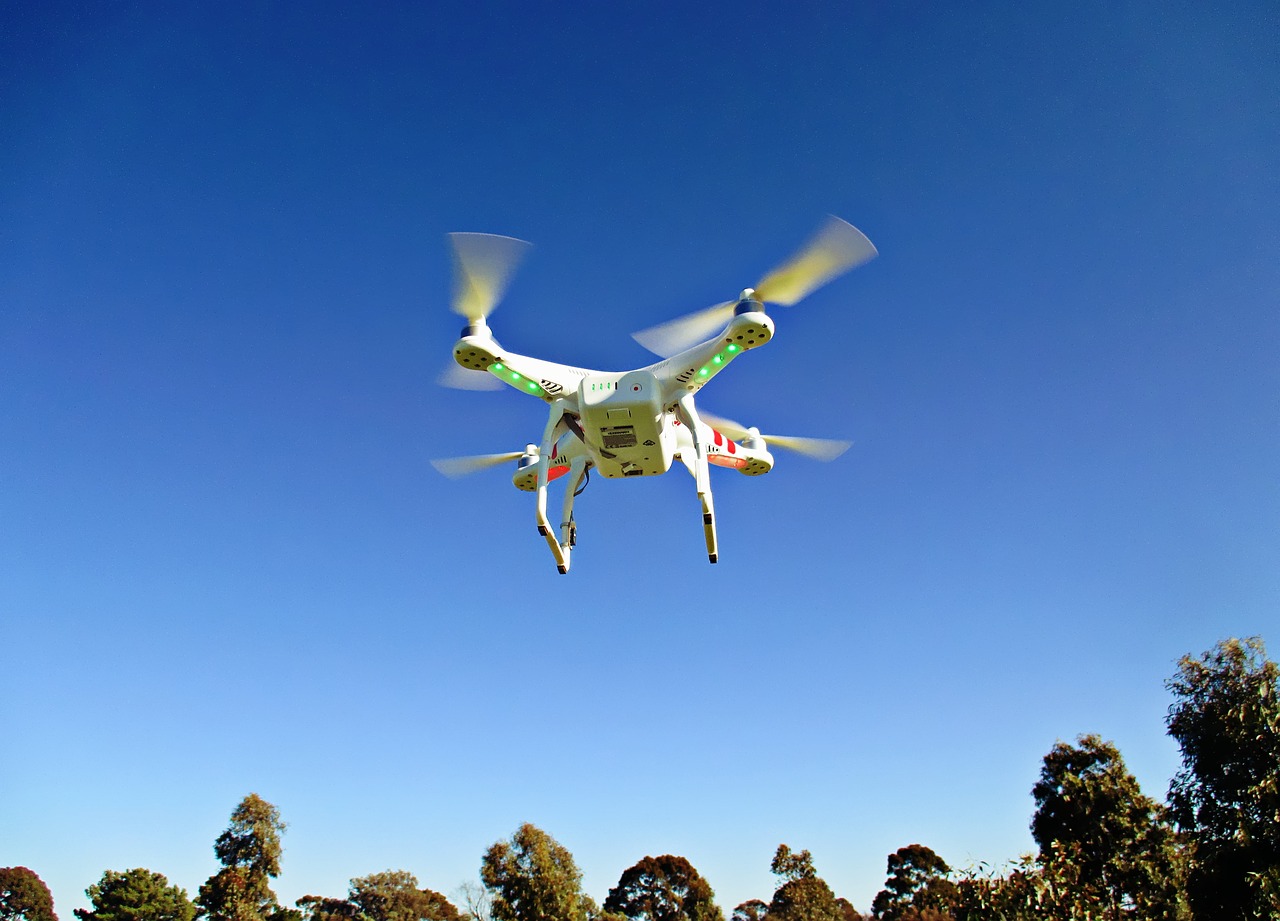
The Future of UAVs in National Defense
The future of Unmanned Aerial Vehicles (UAVs) in national defense is not just bright; it’s positively dazzling! As technology continues to evolve at a breakneck pace, UAVs are poised to become even more integral to military strategies around the globe. Imagine a battlefield where decisions are made in real-time, where drones can autonomously navigate complex environments, and where the risk to human life is significantly minimized. This is not science fiction; this is the future we are heading towards!
One of the most exciting prospects for UAVs is the advent of autonomous systems. These drones will not only perform surveillance and reconnaissance missions but will also be capable of making critical decisions without human intervention. This leap in technology could revolutionize military operations, allowing for quicker responses to threats and more effective mission execution. However, with great power comes great responsibility. The ethical implications of autonomous warfare must be carefully considered to prevent unintended consequences.
Moreover, advancements in artificial intelligence (AI) are set to enhance the capabilities of UAVs exponentially. AI can process vast amounts of data from various sensors in real-time, identifying patterns and making predictions that human operators might miss. For instance, AI-driven UAVs can analyze enemy movements and predict their next steps, providing a tactical advantage. This capability will not only improve operational effectiveness but could also lead to more strategic planning in military engagements.
In addition, the integration of UAVs with satellite technology will further enhance their operational capabilities. Imagine a network of drones communicating seamlessly with satellites to gather intelligence from around the globe. This interconnected system could provide a comprehensive view of the battlefield, enabling military commanders to make informed decisions based on real-time data. The potential for such advancements is staggering and could redefine how wars are fought.
However, as we look to the future, it's essential to address the challenges that come with these advancements. Issues like cybersecurity will become increasingly critical as UAVs become more sophisticated. With the rise of AI and autonomous systems, the risk of hacking and manipulation grows. Military forces must invest in robust cybersecurity measures to protect their UAV fleets from potential threats. This means not only securing the drones themselves but also the data they collect and transmit.
Furthermore, the regulatory landscape surrounding UAVs will need to evolve. As these technologies become more prevalent, governments will have to establish clear guidelines and policies to ensure their safe and ethical use. This includes addressing the legal implications of autonomous warfare and the potential for drones to be used in ways that may violate international laws.
In conclusion, the future of UAVs in national defense is filled with potential and promise. As we continue to innovate and push the boundaries of technology, these aerial vehicles will become even more vital to military operations. However, with this progress comes the responsibility to ensure that these advancements are used ethically and safely. The journey ahead may be complex, but the rewards could be monumental, shaping the landscape of warfare for generations to come.
- What are UAVs used for in national defense? UAVs are primarily used for surveillance, reconnaissance, target acquisition, and combat support in military operations.
- How will AI impact the future of UAVs? AI will enhance UAV capabilities by enabling real-time data analysis, autonomous decision-making, and improved strategic planning.
- What challenges do UAVs face in the future? Key challenges include cybersecurity risks, regulatory issues, and ethical concerns surrounding autonomous warfare.
- Can UAVs operate without human intervention? Yes, future UAVs are expected to have autonomous capabilities that allow them to operate independently in certain situations.
Frequently Asked Questions
-
What are UAVs and how are they used in national defense?
Unmanned Aerial Vehicles (UAVs), commonly known as drones, are aircraft that operate without a pilot on board. In national defense, they are used for a variety of purposes including surveillance, reconnaissance, and combat support. Their ability to gather real-time intelligence and conduct operations in high-risk environments makes them invaluable assets for military forces.
-
How have UAV technologies evolved over time?
UAV technology has come a long way since its inception. Initially developed for simple reconnaissance tasks, advancements in materials, sensors, and data transmission have transformed UAVs into sophisticated platforms capable of performing complex missions. This evolution has significantly enhanced their capabilities in modern military operations.
-
What are the main benefits of using UAVs in military operations?
Integrating UAVs into military operations offers several advantages. They are cost-effective compared to manned aircraft, reduce risks to personnel by allowing remote operation, and improve operational efficiency through real-time data collection and analysis. This makes them a preferred choice for various military missions.
-
What challenges do UAVs face in national defense?
Despite their benefits, UAVs face several challenges, including regulatory hurdles, technological limitations, and ethical concerns. Issues such as vulnerability to cyber attacks, the need for robust navigation systems, and the establishment of a comprehensive legal framework for their use are critical areas that need to be addressed for effective integration into defense strategies.
-
What is the future of UAVs in national defense?
The future of UAVs in national defense looks promising, with ongoing advancements in technology and innovative applications on the horizon. Emerging trends such as artificial intelligence integration and enhanced autonomy are expected to revolutionize their role in military operations, further solidifying their importance in national security.



















